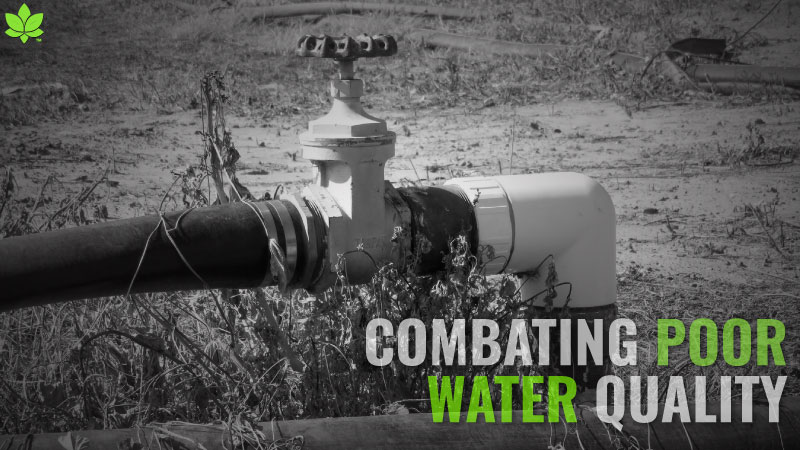Important Lessons Learned About Protecting Florida Waters

Several growers featured in the “Protecting Florida Waters” series have constructed tailwater recovery ponds on their farms to catch runoff for reuse as surface water irrigation.
Photo by Frank Giles
As the “Protecting Florida Water” series comes to a close, we take a look back at recurring practices and themes on the farms featured during the series.
Growers are Proactive: The growers featured in this series are indicative of what others across the state are doing to protect water resources. Many growers participate in the statewide BMPs (Best Management Practices) program administered by The Florida Department of Agriculture and Consumer Services (FDACS). According to the agency’s 2019 annual BMP report, approximately 54% of the state’s agricultural acreage is currently enrolled in the program that aims to conserve water and reduce nutrient runoff. You also know that applying only the nutrients and water needed by crops makes economic sense.
Data is Knowledge: The collection and use of data on farms to monitor the need for irrigation and fertilizer is a clear and growing trend. The use of weather stations and soil moisture probes are becoming more common, allowing you to ever more precisely control your production programs.
Plant City-based strawberry grower Dustin Grooms is taking plant nutrient testing to the next level using sap analysis. He describes the process as akin to blood work, but for plants. The samples (young and old leaves) are shipped to Holland for analysis and reporting.
“It is like drawing blood and tells us exactly what the plants need even better than traditional tissue sampling,” Grooms says. “It is pretty cutting-edge technology, and we are still learning how we can use it to really fine-tune the rates and timing of nutrients we are applying. But it has big potential to save us money on fertilizer while optimizing plant health.”
4Rs in Action: Several of the growers featured in the series have been awarded the National 4R Advocate Award. A distinguished recognition for those who follow the program’s fertilizer principles — Right Source, Right Rate, Right Time, Right Place. Hundley Farms is a past winner. The farm is in the Everglades Agricultural Area — the most regulated farmland in the country when it comes to water and nutrient management. Eric Hopkins, a Senior Vice President of the farm, says many tactics are deployed to protect the waters in the sensitive ecosystem. Controlled release and foliar fertilizers are among those, along with laser leveling of fields and using GPS for precision planting, nutrient application, and tillage.
Conservation Tactics: Using less groundwater is another import aspect of protecting Florida waters. Several growers featured in the series have constructed tailwater recovery ponds on their farms to catch runoff for reuse as surface water irrigation.
Brittany Lee, a Waldo-based blueberry grower, built an entire farm around a surface water management plan. The layout of the property focused on moving irrigation and rainfall water from the fields down to a 2-acre tailwater recovery pond, which was constructed on the backside of the property.
“When we designed the farm, we did it much like you would a subdivision,” Lee says. “We thought about where the roads would go and divided fields into smaller, more manageable zones to be able to get water off more quickly. The water was already directed toward a natural creek by where the pond is positioned. We just manage the flow and collect it in the pond for reuse.”
The tailwater recovery pond holds just shy of 8 million gallons of water. Lee expects to save about 50% of groundwater withdraws for freeze protection by using the recovered water.
Cost Share is Available: There are cost-share dollars available to encourage growers to invest in the tools and technologies that can be deployed to protect Florida waters. FDACS and the state water management districts have funds to help you make those improvements on your farms.
This is the final installment in a series of articles featuring growers who are taking a proactive approach to protecting the water resources on and around their farms. The “Protecting Florida Waters” stories investigate how production practices, equipment, and technology are helping growers in the Sunshine State do more to protect water.










